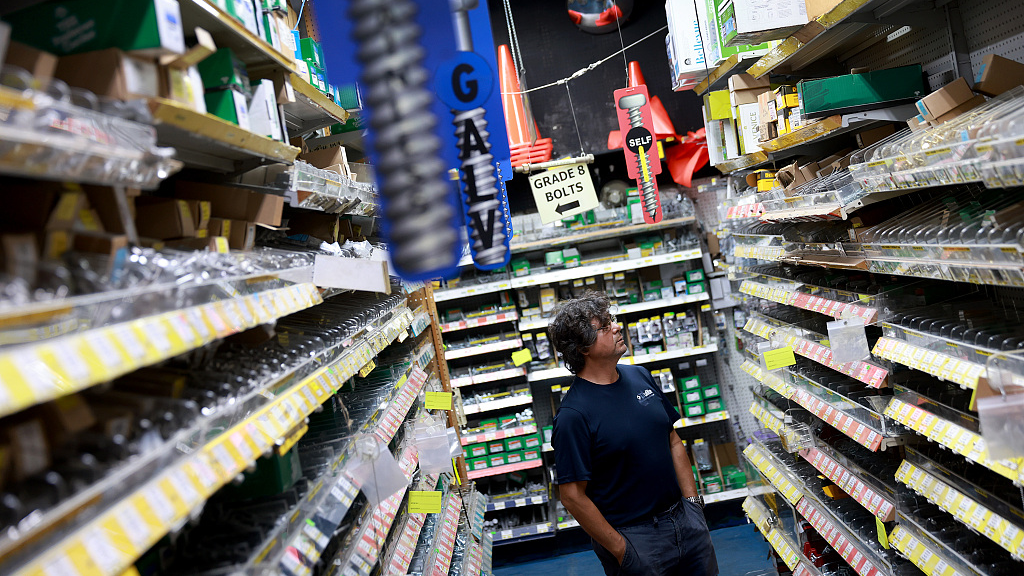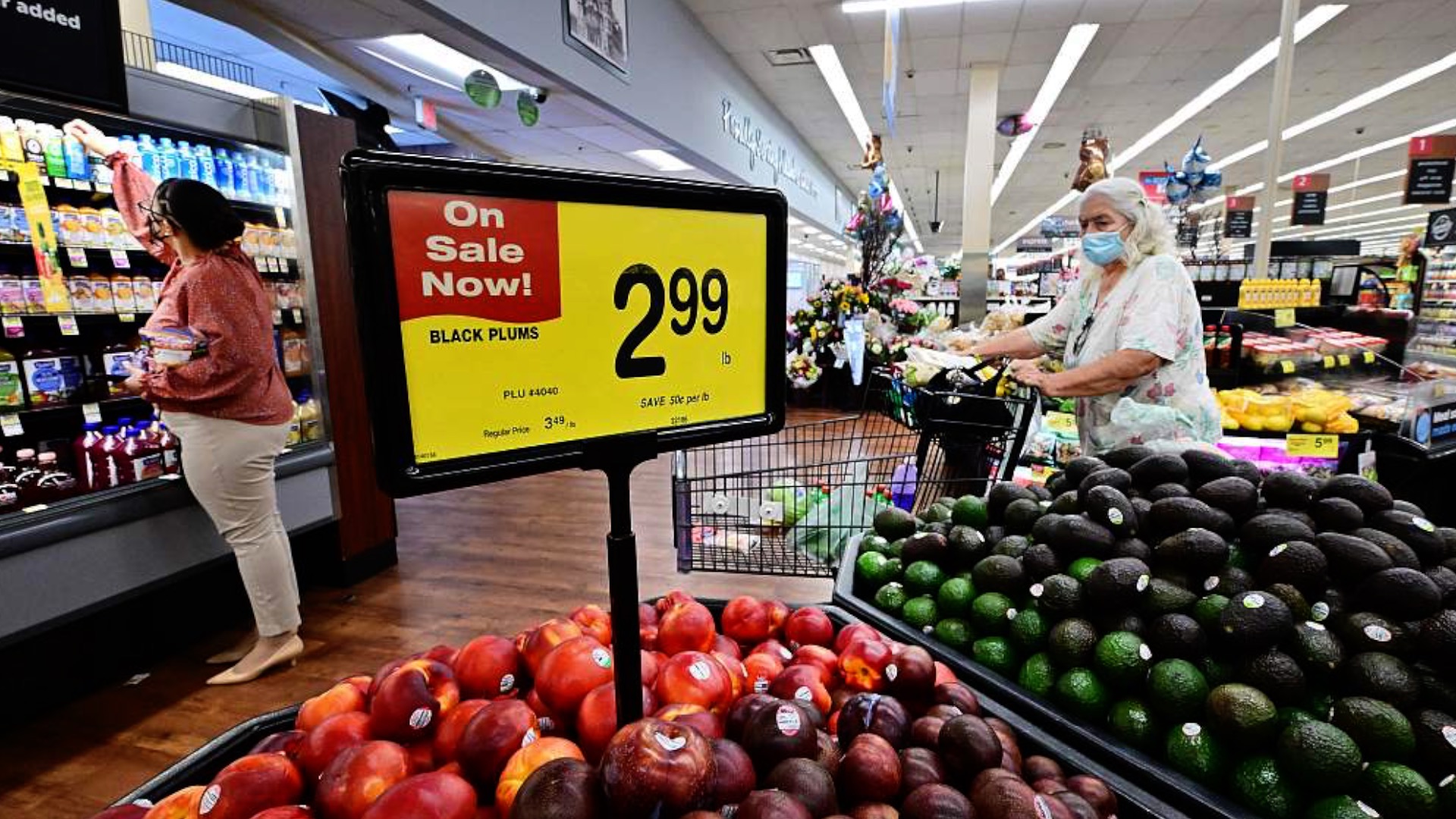
A customer shops at Shell Lumber and Hardware home improvement store in Miami, Florida, U.S., July 13, 2022. /CFP
A customer shops at Shell Lumber and Hardware home improvement store in Miami, Florida, U.S., July 13, 2022. /CFP
The U.S. Federal Reserve is seen ramping up its battle with 40-year high inflation with a supersized 100 basis points rate hike this month after the country's inflation refreshing a new 40-year high.
Data from the Labor Department showed rising costs of gas, food and rent drove the consumer price index (CPI) up 9.1 percent last month from a year earlier, views may be evolving.
Traders of futures bet a nearly 80-percent probability of a full percentage-point rise at the coming meeting in July, according to an analysis of the contracts by CME Group, Reuters reported on Thursday.
That was up from about a one-in-nine chance seen before the report, which also showed core inflation, excluding more volatile food and energy prices, accelerated on a monthly basis.
The expectation that the Fed will get more aggressive to stop inflation is also raising alarm that policymakers will go too far and crater economic growth as well.
"Everything is in play," Atlanta Fed President Raphael Bostic told reporters in Florida, when asked about the possibility.
While he said he still needed to study the "nuts and bolts" of the report, "today's numbers suggest the trajectory is not moving in a positive way... How much I need to adapt is really the next question."
Bostic has been among the bevy of central bankers in recent weeks signaling support for a second straight 75 basis points rate increase at their upcoming policy meeting on July 26-27.
Yields on longer-term Treasuries fell, making the so-called yield-curve inversion the most pronounced it has been in more than 20 years.
An inversion is seen as a harbinger of a downturn because it suggests investors are banking on a growth slowdown. Rate futures trading suggests investors anticipate the Fed may need to start cutting interest rates again by the middle of next year.
"The June CPI report was a straight up disaster for the Fed," wrote SGH Macro Advisors' Tim Duy. "The deepening yield curve inversion is screaming recession, and the Fed has made clear it prioritizes restoring price stability over all else."
00:52

Other central banks are also feeling the heat with the Bank of Canada on Wednesday raising its benchmark interest rate by 100 basis points in a bid to tame soaring inflation, a surprise move and its biggest in nearly 24 years.
While acknowledging the inflation rate was "unacceptably high," U.S. President Joe Biden argued that it was "out of date" as it did not reflect a clear drop in energy prices since mid-June.
According to AAA (American Automobile Association), the national average price at the pump was down to $4.63 a gallon, from $5.01 a month ago.
The recent price drop had provided "important breathing room for American families. And, other commodities like wheat have fallen sharply since this report," the president said in a statement.
Insisting that tackling inflation was the top priority, Biden admitted his administration needed "to make more progress, more quickly, in getting price increases under control."
The U.S. gas prices at the pump last month hit a record of more than $5 a gallon. However, energy prices have eased in recent weeks, with oil prices falling below $100 a barrel for the first time since April, which could start to relieve some of the pressure on consumers.
The Federal Reserve is likely to continue its aggressive interest rate increases as it tries to tamp down the price surge by cooling demand before inflation becomes entrenched, AFP reported.
(With input from Reuters, AFP)

